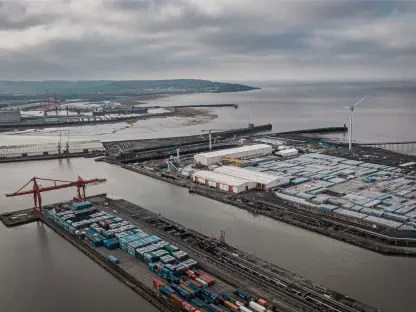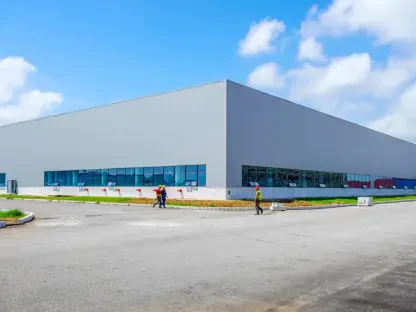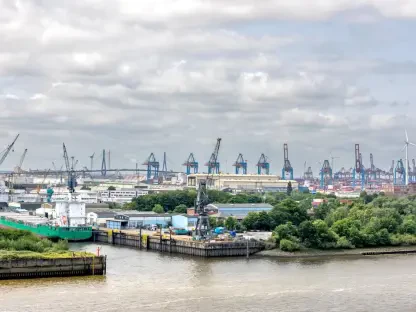In a world where supply chain disruptions can cost companies billions—think of the $94 billion hit from the 2021 Suez Canal blockage—one question looms large: who steers the ship when algorithms and automation falter? Enter Bryan Jensen, a veteran leader with nearly three decades at St. Onge Company, whose career offers a masterclass in navigating the turbulent waters of logistics. His story isn’t about chasing the latest tech trend but about anchoring complex systems in human trust and insight, proving that leadership remains the ultimate differentiator in an industry under constant strain.
The significance of Jensen’s approach cannot be overstated. As supply chain challenges like labor shortages, trade policy volatility, and automation pressures intensify, his philosophy—rooted in people, pragmatism, and adaptability—provides a blueprint for success. With a track record of scaling St. Onge from a modest firm to a 170-employee powerhouse and serving as Chair of the MHI Board of Governors, Jensen’s insights resonate with professionals grappling with today’s high-stakes environment. This feature delves into the lessons from his journey, offering actionable wisdom for leaders aiming to thrive amid chaos.
Why Leadership Matters in an Age of Algorithms
At first glance, supply chain management might seem like a numbers game—data-driven, automated, and impersonal. Yet, beneath the surface of predictive analytics and robotic warehouses lies a truth Jensen has championed throughout his career: human leadership is irreplaceable. Technology can optimize routes or forecast demand, but it cannot build trust with clients or inspire teams to push through crises. Jensen’s tenure at St. Onge Company illustrates how a leader’s vision can turn cold systems into collaborative successes, even when digital tools dominate the landscape.
Consider the complexity of modern logistics, where a single glitch can ripple across global markets. Jensen’s ability to ground decisions in human judgment—whether mediating client concerns or mentoring staff—shows that leadership acts as the glue holding fragmented operations together. His perspective cuts through the noise of tech hype, emphasizing that algorithms lack the empathy and adaptability needed to address unforeseen challenges, a lesson drawn from decades of real-world problem-solving.
This focus on the human element sets Jensen apart in an era obsessed with automation. His career, spanning roles from hands-on operations at Toys “R” Us to strategic oversight at St. Onge, reveals a consistent thread: leaders must bridge the gap between machine efficiency and human needs. It’s a reminder that even the most advanced systems require a steady hand to guide them, ensuring that innovation serves people rather than the other way around.
The High Stakes of Supply Chain Leadership
Today’s supply chain landscape is a battlefield, with disruptions from erratic trade policies to persistent labor shortages threatening operational stability. Jensen, with his extensive experience and leadership role at MHI, stands at the forefront of these issues, witnessing firsthand how global commerce hinges on resilient strategies. His insights are particularly relevant for professionals navigating a world where a single tariff shift can upend years of planning, demanding a balance of foresight and flexibility.
The pressure to integrate automation adds another layer of complexity. Many companies rush to adopt robotics as a quick fix for labor gaps, often ignoring the staggering costs—sometimes millions—without clear returns. Jensen’s career reflects a counterpoint to this trend, advocating for decisions rooted in financial reality rather than industry buzz. His approach resonates with leaders who face the dual challenge of maintaining efficiency while preserving the human touch in operations.
Beyond technology, the stakes extend to societal impacts, as supply chains underpin everything from grocery availability to medical supply delivery. Jensen’s work highlights the ripple effects of leadership decisions, where a misstep can delay critical goods, affecting millions. This broader responsibility underscores why his emphasis on trust and adaptability matters, offering a lens through which current and aspiring leaders can view their role in stabilizing an interconnected world.
Core Principles of Jensen’s Leadership Style
Jensen’s leadership philosophy rests on distinct pillars, each forged through years of navigating industry shifts. First, he places people above technology, a belief evident in his efforts to build client trust by addressing practical concerns, such as replacing inefficient warehouse equipment despite initial pushback. This focus on relationships over tools has been a cornerstone of his success, fostering loyalty in an often transactional field.
Another key tenet is curiosity as a driver of innovation. Jensen’s mantra, “I don’t know what I don’t know,” has fueled St. Onge’s growth from 35 to 170 employees during his tenure, reflecting a mindset that embraces learning over complacency. This approach allows him to tackle problems with fresh perspectives, often exploring multiple solutions before settling on the most effective path, a tactic honed through diverse projects across his career.
Finally, pragmatism guides his stance on automation and uncertainty. Skeptical of tech as a universal solution, Jensen pushes for ROI-driven choices, avoiding the pitfalls of following fleeting trends. He also addresses the “hesitation bubble” caused by fluctuating tariffs, advocating for adaptive strategies to counter external chaos. These principles, grounded in real-world challenges at St. Onge and beyond, offer a robust framework for leading through complexity.
Insights from Jensen and Industry Perspectives
Hearing directly from Jensen adds depth to his leadership narrative, particularly his hiring philosophy that prioritizes curiosity and cultural alignment over rigid credentials. He views interviews as a mutual evaluation, ensuring both parties align on values—a strategy that builds cohesive teams at St. Onge. This focus on fit over formality mirrors a broader industry shift toward valuing soft skills in a tech-heavy field.
Industry trends echo Jensen’s cautious take on automation, with many leaders now questioning its overhyped promises. A recent study by the Supply Chain Management Review found that 62% of companies adopting robotics faced unexpected maintenance costs, validating Jensen’s insistence on meticulous cost-benefit analysis. Similarly, trade policy instability remains a shared concern, with professionals across the sector noting how unpredictable tariffs complicate long-term planning.
A personal reflection from Jensen adds a human layer to his story: during years of heavy travel, “home” meant returning before his children slept, a poignant reminder of the sacrifices behind a demanding career. This balance, or struggle for it, connects with countless leaders juggling professional ambition with personal priorities, reinforcing that leadership extends beyond boardrooms into the fabric of daily life.
Practical Strategies from Jensen’s Playbook
Turning Jensen’s insights into action offers a roadmap for supply chain professionals seeking tangible impact. Start by prioritizing trust with stakeholders, as Jensen did by listening to client frustrations over equipment choices and finding workable solutions. This approach ensures buy-in, smoothing the path for operational changes in high-pressure environments.
Embrace curiosity by adopting an “alternative-driven” mindset, exploring varied options before committing to a plan—a method that has driven St. Onge’s project successes. Additionally, assess automation investments with a critical eye, calculating ROI down to the last dollar to avoid costly missteps, a lesson drawn from Jensen’s skepticism of tech fads. These steps ground innovation in practicality, ensuring sustainable progress.
Lastly, prepare for instability by crafting flexible fiscal strategies to weather trade policy shifts, while setting personal boundaries to sustain well-being, much like Jensen evolved his priorities over time. These strategies, directly tied to his proven methods, empower leaders to navigate uncertainty with confidence, blending professional rigor with personal resilience for lasting impact.
Reflecting on a Legacy of Leadership
Looking back, Bryan Jensen’s journey through the supply chain landscape stands as a testament to the enduring power of human-centric leadership. His decades at St. Onge Company, coupled with his influential role at MHI, showcase how trust and adaptability can transform challenges into opportunities. Each decision, from prioritizing relationships to questioning automation’s value, leaves a mark on an industry often driven by cold efficiency.
Moving forward, the lessons from his career urge current and future leaders to anchor their strategies in curiosity and pragmatism. Supply chain professionals should take heed by fostering genuine connections, rigorously evaluating tech investments, and building buffers against global uncertainties. Jensen’s story serves as a call to balance innovation with humanity, ensuring that as the industry evolves, the heart of leadership remains steadfastly human.









